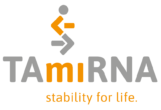microRNAs & osteoporosis
osteoporosis
Osteoporosis is one of the most common chronic diseases worldwide and causes more than 8.9 million fractures annually, resulting in an osteoporotic fracture every three seconds. Osteoporosis is estimated to affect 200 million women globally (1).
After the onset and during the progression of osteoporosis frequently experience no or very few symptoms. However, the adverse outcome of osteoporosis are so-called fragility-fractures, which occur after low-trauma accidents and cause severe socio-economic burden for both patients and healthcare.
Primary osteoporosis is the most frequent form (95%) of osteoporosis and affects women at or after menopause. The effective prevention of primary osteoporosis related fractures depends on efficacious therapeutic treatments as well as precise diagnostic tools that are able to capture fracture risk at an early stage of the disease.
Part of TAmiRNA’s mission is to promote and enable earlier diagnosis of osteoporosis.
diagnosis of osteoporosis – gold-standard
The state-of-the-art for diagnosis of osteoporosis is the assessment of bone mineral density by Dual-X ray absorptiometry (DXA) or the WHO-FRAX score. Although both tools have clinical utility and are routinely applied they face major limitations, especially when contributing factors such as diabetic osteopathy are present. Bone turnover markers such as serum C-terminal telopeptide of type I collagen (s-CTX) can be used for monitoring of anti-osteoporotic treatments, however, their utility for predicting fracture-risk has not been validated.
Novel biomarkers are therefore desirable, which can alone or in combination with existing biomarkers provide a better understanding of bone strength and fracture risk in patients.
microRNA biomarkers for osteoporosis
The clinical utility of biomarkers should be evaluated on the basis of three characteristics (2)
- measurability
- validated biology
- decision support
measurability
Circulating microRNAs can be quantified in serum/plasma samples using quantitative PCR. The method is reliable and can undergo technical validation. However, in order to be successful a well-characterized and standardized protocol must be used. TAmiRNA has developed a robust workflow and offers qPCR kits together with software solutions for circulating microRNA analysis.
validated biology
Numerous studies have by now validated that microRNAs are regulated during bone formation and resorption and therefore play an important role in bone homeostasis. In the following a few examples for so-called “osteomiRs” are given:
- miR-31-5p inhibits bone formation via Frizzled-3, Osterix, and SATB2; miR-31-5p is induced by RANKL and promotes osteoclast formation (3-6)
- miR-29b-3p promotes bone formation and extracellular matrix remodelling by regulating collagen synthesis (7-10)
- miR-335 promotes bone formation by silencing WNT inhibitor DKK-1 (11)
- miR-214 inhibits bone formation via ATF4 and is down-regulated in osteoporotic bone (12)
decision support
TAmiRNA has conducted several clinical studies to explore the diagnostic and prognostic performance of circulating microRNAs in osteoporosis. It could be shown that microRNAs alone or in combination with DXA or FRAXTM provide excellent discrimination between high and low-risk patient subgroups in postmenopausal, diabetic as well as male idiopathic osteoporosis (13).
The osteomiR® kit enables the simple and robust detection of osteomiRs® in serum samples. The osteomiR® app streamlines and standardized the analysis and interpretation of qPCR data.









